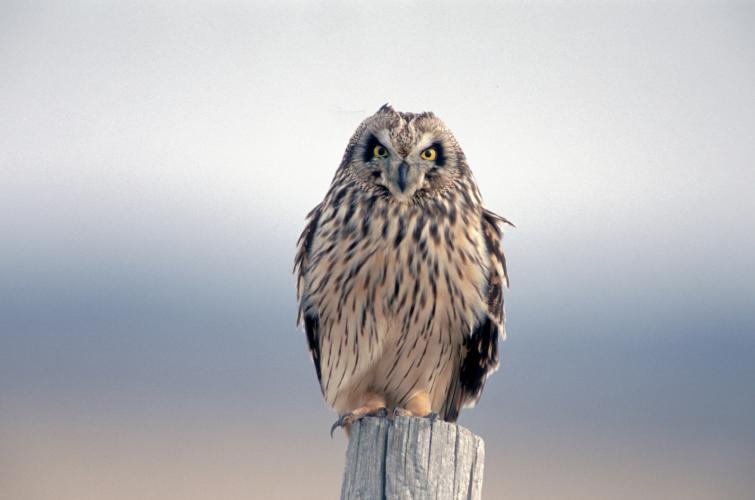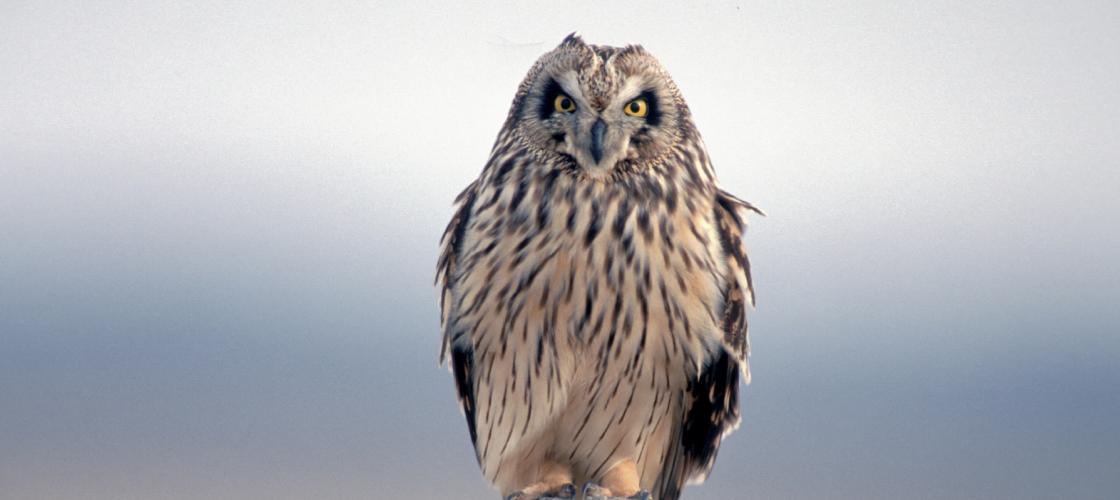The best owls to see in daylight are a challenge to spot in Missouri, unless you know where and when to look. Short-eared owls hunt during winter over grasslands and native prairies near woods. Known for aerial displays and piercing yellow eyes, they can be seen around dawn and dusk. Short-eared owls have keen vision but mostly hunt by sound, and mostly for rodents and birds.
Short-eared owls are medium birds that weigh about a pound. They have brown streaks and small tufts on top of their round head. These are often mistaken for ears.
Males will dip and dive and clap their large wings to attract females. They will also offer food so the females will not consider them as food. Short-eared owls pair up around mid-February and gather in groups in winter for warmth and protection. They nest on the ground among tall grasses and plants. Their numbers have dropped due to habitat loss but they can be seen in Missouri from October through April. Forty pairs have been spotted at High Lonesome Prairie Conservation Area near Cole Camp. The air show is worth the trip out to the country to see owls in daylight.
FUN FACTS:
The short-eared owl has unique features. Its tufts are difficult to see, while its facial disk is plae and its yellow eyes are surround by black.
In flight, look for the buff patch on the outer part of the upper side of its wing, and a dark crescent near the bend of the wing on the underside.
Its characteristic flight is buoyant and butterfly-like as it flies across the open fields close to the ground.
The short-eared owl's voice is varied with barks (like a small dog), hoots, squeaks, and hissing sounds. They are usually silent on their wintering grounds in Missouri.
The species is declining across the continent, mostly due to habitat loss, as the large, undivided tracts of open grasslands they require are converted to cropland, pasture and human development (buildings and roadways).
Learn more about the short-eared owl with MDC's Field Guide.


Recent Posts
























